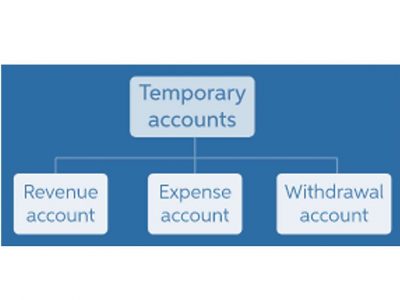
For example, ABC Corporation signs a five-year lease deal for office space with monthly payments of ₹5,000. The lease is categorised as an operating lease, and ABC Corporation records the present value of the lease payments on its balance sheet as a lease obligation liability. In the double-entry system, every transaction affects at least two accounts using debits and credits. A debit is an entry made on the left side of an account’s ledger, while a credit is an entry on the right side. The terms do not imply positive or negative value; they only indicate which side of the ledger the entry is recorded on.
Accounts Receivable Procedures Step by Step
Some jurisdictions prohibit payments if they would render a company insolvent. Businesses must also communicate payment schedules and tax implications to shareholders. In the U.S., dividends are subject to withholding taxes, and companies must issue Form 1099-DIV for reporting purposes. Proper management of dividends payable strengthens investor relations while safeguarding financial stability. Income taxes payable are calculated based on taxable income, incorporating relevant tax rates, deductions, and credits. For instance, the federal corporate tax rate in the United States is 21%, with state taxes adding to the burden.

real and nominal types of bookkeeping accounts

In addition to our balance sheet templates, our business forms also offer templates for the income statement, statement of cash flows, and more. Remember that debits increase your expenses, and credits decrease expense accounts. If you don’t update your books, your report will give you an inaccurate representation of your finances. Because you typically need to pay vendors quickly, accounts payable is a current liability.
- Record noncurrent or long-term liabilities after your short-term liabilities.
- The Balance Sheet shows the relationship between Assets, Liabilities, and Equity, where assets normally maintain a positive balance and equity and liabilities maintain a negative balance.
- Assets refer to resources owned and controlled by the entity as a result of past transactions and events, from which future economic benefits are expected to flow to the entity.
- The accounting method under which revenues are recognized on the income statement when they are earned (rather than when the cash is received).
- For example, if you’re figuring out one year’s current liabilities, you would factor in 12 mortgage payments.
- The asset side increases by $20,000, and the liability side increases by the same amount.
Debit and Credit

Equipment is a noncurrent or long-term asset account which reports the cost of the equipment. Note that the ending balance in the https://staging.yessiragency.com/los-angeles-and-orange-county-bookkeeping-service/ asset Prepaid Insurance is now $600—the correct amount of insurance that has been paid in advance. The income statement account Insurance Expense has been increased by the $900 adjusting entry.
In addition to this, the business may incur some expenses for production that are classified under the cost of sales. On the contrary, expenses incurred for the support of company operations are classified under administrative expenses. Liability can be current/non-current, depending on the date of maturity. If the liability to be paid is due within a year, is said to be a current liability.
- Liabilities are categorized as current or non-current depending on their temporality.
- Rather than listing each transaction under the above five accounts, businesses can break accounts down even further using subaccounts.
- But a COA in disarray—or no COA at all—can quickly lead to inaccuracies that harm your operations and financial strength.
- The income statement account that is pertinent to this adjusting entry and which will be debited for $1,500 is Depreciation Expense – Equipment.
Generally accepted accounting principles (GAAP)
- Assets and liabilities in accounting are two significant terms that help businesses keep track of what they have and what they have to arrange for.
- Since no interest is payable on December 31, 2024, this balance sheet will not report a liability for interest on this loan.
- The commitments and debts owed to other people are known as liabilities.
- When the revenues are earned they will be moved from the balance sheet account to revenues on the income statement.
- This obligation shows ABC Corporation’s overall financial commitment under the leasing agreement.
You can easily report on the most applicable sub-account to get a sense of the financials in that category. This is a much faster method than scrolling through numerous transactions in the Travel Expenses account, trying to distinguish which are meals and which are flights. Simply put, each account type mentioned usually includes certain major accounts, for example, Bank Accounts and Accounts Receivables are commonly used accounts that belong to the Assets Account Type. But sub-accounts help you break down accounts even further into easily managed categories. So rather than listing every transaction using only a few primary accounts of each type, you would use sub-accounts for more detailed recording and reporting.

Balance Sheet Should Be Read With the Other Financial Statements
Let’s assume that the company borrowed the $5,000 Catch Up Bookkeeping on December 1 and agrees to make the first interest payment on March 1. If the loan specifies an annual interest rate of 6%, the loan will cost the company interest of $300 per year or $25 per month. On March 1 the company will be required to pay $75 of interest. On the December income statement the company must report one month of interest expense of $25. On the December 31 balance sheet the company must report that it owes $25 as of December 31 for interest. Interest Payable is a liability account that reports the amount of interest the company owes as of the balance sheet date.
Most often the portion of the long-term liability that will become due what accounts are liabilities in the next year is listed as a current liability because it will have to be paid back in the next 12 months. Non-current Liabilities – Also termed as fixed liabilities they are long-term obligations and the business is not liable to pay these within 12 months. Current Liabilities – Also known as short-term liabilities they are payable within 12 months or within the operating cycle of a business.

